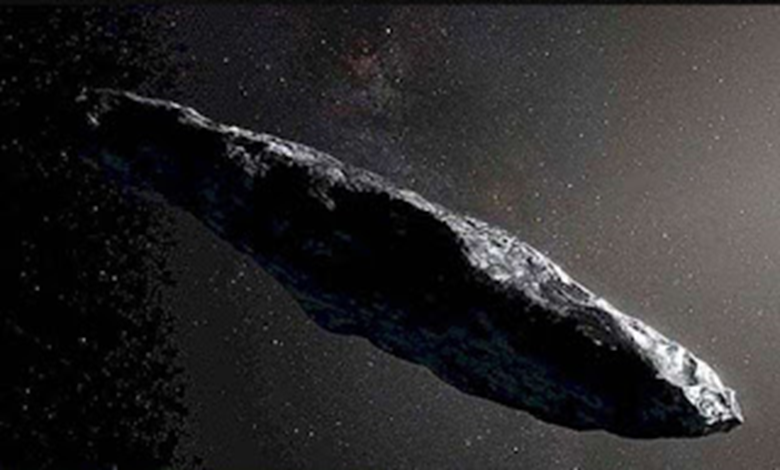rogue planets
What are rogue planets
They are planets floating in interstellar space and do not revolve around any star in a regular orbit, but rather travel on their own, and head in any direction that gravity pulls them to.
No one knows the exact number of these planets, but some scientists point to billions in our galaxy only.
Planets in our solar system
- Like Earth our planet for example - it benefits from the warmth and light of the central star (the Sun), and the light emitted by that star makes it visible.
However, there are invisible planets hidden from our direct view, deserted and alone swimming across the vast universe parts.
These dark and rogue worlds have no central star revolving around it, no light radiating its light and appearing, no warmth reaching it;
They are rogue planets, and astronomers searching for this type of planet have found a new planet roughly the size of Earth.
These planets are made of nebular debris and dust left over after a new star is born. These planets orbit around the newborn star in a thin disk of atoms and gas, and grow as these tiny particles stick and attract each other until the space around them is clean.
It is common for newly formed planets to collide
(Primary planets).
Stars do not form in individual nursery nebulae
Rather, in constellations, from hundreds or thousands of infant stars at a time, encounters and collisions between infant planetary systems cause more debris and gravitational interactions.
It is believed that the Earth - in its early years and formation - collided with another body in the solar system that was about the size or slightly larger than Mars, destroying and smashing enough of the earth's rocky material to form the moon. But some of the other planets at that point, faced a much murkier future, had been completely exited from the star's gravitational field. Life in the cold of space was its destiny..
Rogue planet sizes
Among the stars and in the vast universe, these rogue planets are floating and freely floating in space, and when the planets are very young in age, say let's say they are old:
A few million years, given that the Earth is over 4.5 billion years old - it's warm, it's hot.
Discover rogue planets
Several examples of such floating minor planets have been observed:
Like a little Jupiter.
Right in the regions of nebulae where stars had previously formed, shortly before, as for finding rogue planets of even smaller size, that was impossible
Approximately before the lens is detected.
gravity lens
Anything with mass that bends space and causes light to deflect from its straight path, this process results in focusing light on this massive object from a source behind it, expanding the view like a huge magnifying lens, this is called a gravitational lens.
Relativity and the gravitational lens
Einstein predicted it through the general theory of relativity, and verified it for the first time when he noticed the stars moving away from their usual positions, and he saw them near the sun while the moon was hiding it completely with its eclipse of 1919.
The gravitational lensing effect is observed in galaxies made up of trillions of stars created by the vast amounts of intergalactic material and stars lined up with other stars out of sight.
One of the observations in 2019 was the result of observing a black hole in a nearby massive galaxy called Messier 87. Therefore, an invisible rogue planet that crosses in front of the hole can act as a gravitational lens or a small lens, because it is definitely too small for a black hole.
The observation of a microgravitational lensing event is attributed to a new rogue planet named OGLE-2016-BLG-1928.
It only took 42 minutes to see the swell of light from an inconspicuous star in the dense interior of the Milky Way.
This means that the transient should have been a small body, but its estimated mass leaves no doubt among scientists that it is a planet not much different in size from the size of our planet Earth. OGLE-2016-BLG-1928 is the smallest rogue planet ever found, as well as being the closest to Earth.
? Could Earth become a rogue planet
The large numbers of rogue planets observed crossing our galaxy raise interesting questions.
?Can life arise, survive, or settle on such worlds
We wonder if technologically advanced civilizations are able to overcome the problems of eternal darkness and ice age without comparing them to the long and varied history of the Earth, have they made use of nuclear energy or have become completely non-biological? This sounds like a science fiction movie, but what are the chances of Earth colliding with a planet like this by chance?? ...... This !is unimaginable
rogue asteroids
like umuamua
rogue comets
Like Comet Borisov, it has been traveling through our solar system, for just the past two years, it's unlikely that a rogue planet will pass us very close, but nonetheless it's not an option out of the realm of possibilities.
Earth has survived being removed from the Sun system, but one day, in four billion years, Earth could become a rogue planet because as the Sun ages, it will swell up, swell in size and burn half its mass into the surrounding space. It either swallows the Earth or forces it out of its orbit around it, but its gravity is unlikely to fade completely to this degree.
So when the Sun evolves into a burning white dwarf, perhaps Earth will face a fate similar to that of other cold, dark worlds. It won't be completely alone, but it will be far from the orbit of its warm, sun-bright star,,,
Source: websites






